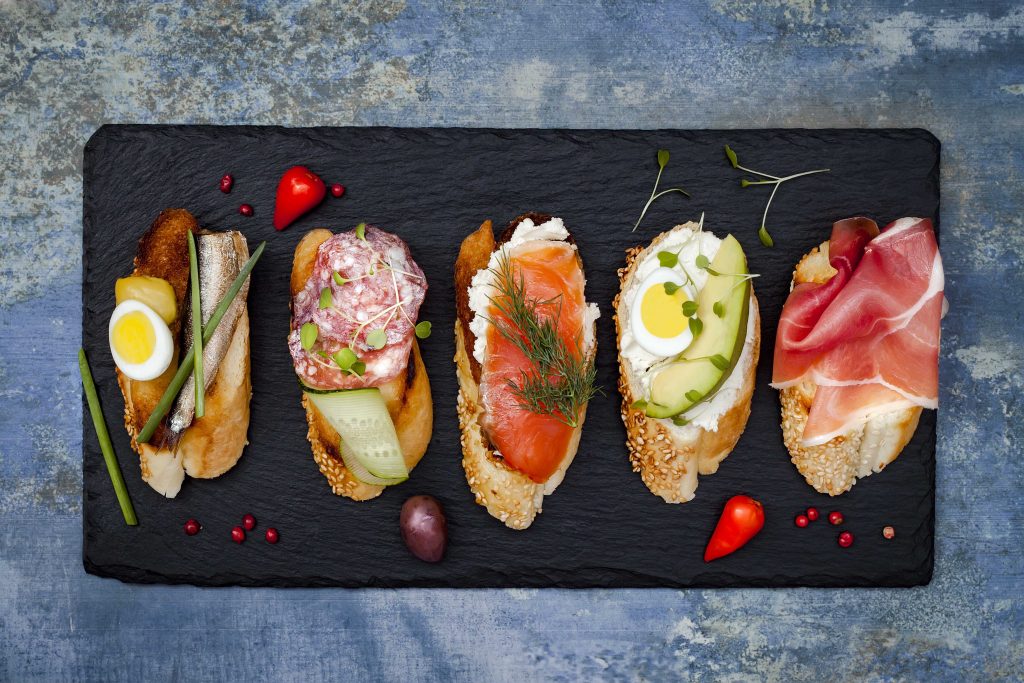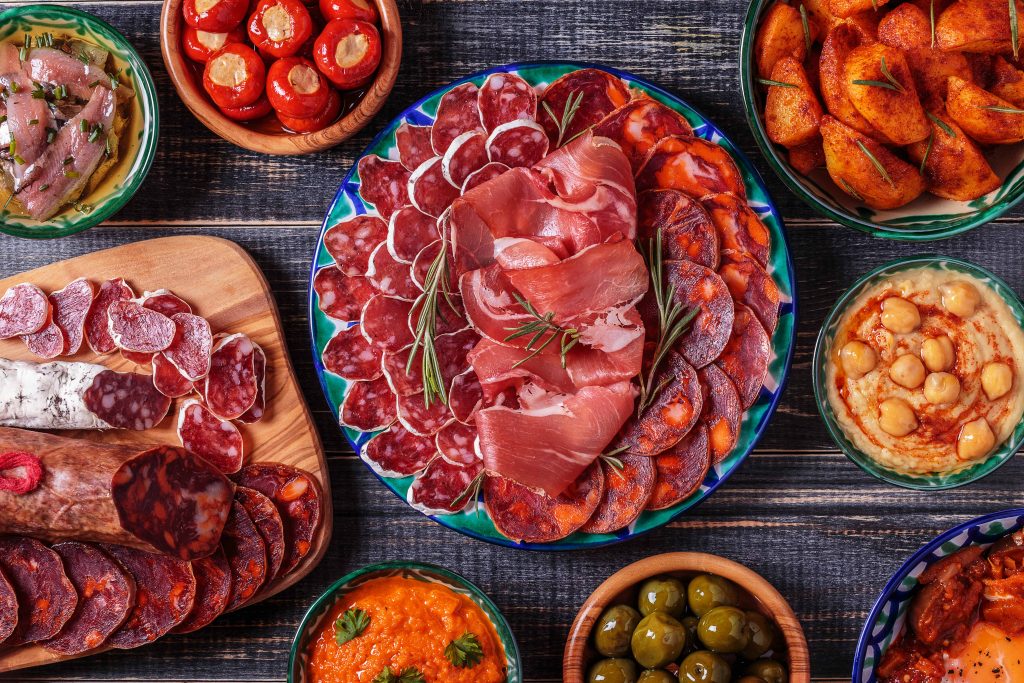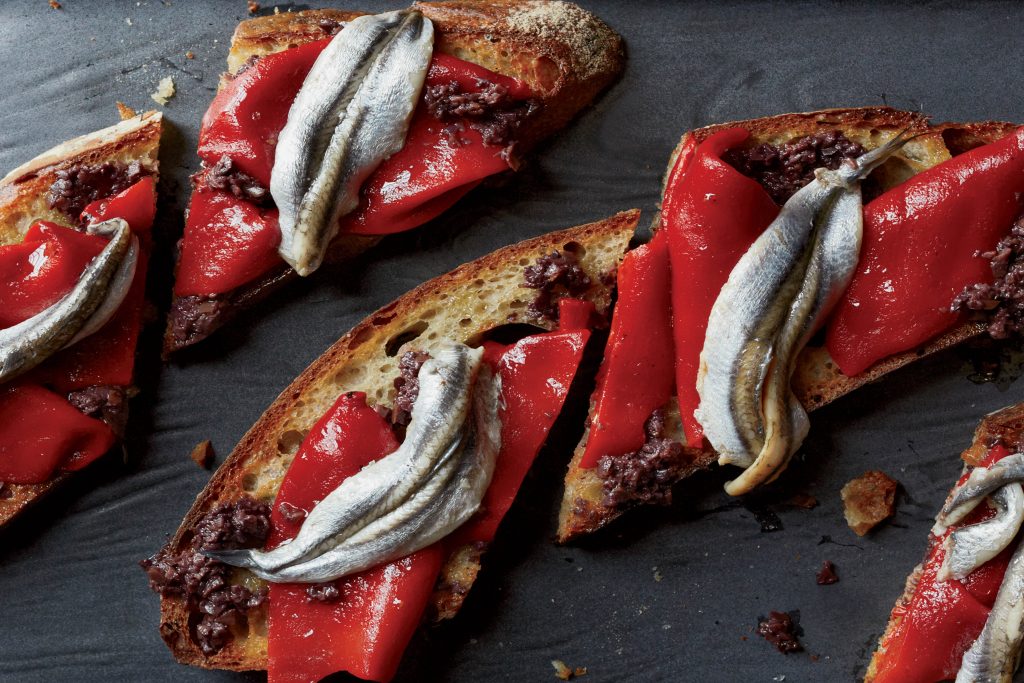
When Nothing But Spanish Will Do – Wine-People Problems
Dec 20, 2016
I suspect we can all relate to having the embarrassing issue of fixating on food and wine to a borderline obnoxious level. Spanish wine is especially bad for this. I suspect one reason is that when you drink Spanish wine and pair it with the perfect flavors, you end up mentally leaving your surroundings and finding yourself swept away to the Iberian Peninsula. Some may find this distracting, and your friends might be wondering when you’re going to return to reality.
Well, I’m proud to say that I’ve conducted some unofficial research of my own that leads me to conclude that our wine obsessions can only lead to rich life experiences! The ever more contagious Spanish wine attraction is a legitimate and very natural phenomenon, so relax and just go with it! Here’s a step-by-step guide to satisfying your Spanish wine obsession for the maximum pay-off…
- Step 1 – Identify the craving
- Step 2 – Determine the Spanish Wine to sip with the object of your craving
- Step 3 – Observe an elevated state of being
- Step 4 – Share with others
Yes, these impulses seem to come out of nowhere. They start off as a craving and grow from there. Eventually the longing can’t be ignored.

The paella craving
The paella craving is a fun one. Let’s discuss the seafood variation of this dish, shall we? When you’re dreaming of coastal delicacies in your saffron-scented rice dish, you’re going to need a wine that can handle the layers of flavors…
Toro Albalá Fino Eléctrico En Rama is so decadent when paired with paella. The subtle oxidized flavors in the wine marry with the crispy burnt rice at the bottom of the paella pan and the salty quality of the Fino brings out flavors of the octopus and mussels. Toro Albalá is located in the D.O. Montilla-Moriles area and is not technically in the Sherry region in Spain, but is nearby and creates wines in much the same style as Sherry. Montilla-Moriles predominantly grows the Pedro Ximénez grape and usually produces a sweet style wine.Toro Albalá Fino Eléctrico is unique because, though produced from Pedro Ximénez grapes, it is Fino (completely dry), instead of being sweet. Oh….and you can’t ignore the fact that it comes bottled in the shape of a lightbulb! Pouring this wine out of a lightbulb enhances the novelty of this perfectly Spanish beverage and attracts the right kind of attention in restaurants, your tapas get-togethers, and on the shelves of hip retailers that “get it.”

The I want everything on the tapas menu craving
Don’t worry, you’re not the only one to attempt this. I’ve aspired to do so many times. It’s a brilliant idea and very possible since you’re snacking on small plates of Iberian delicacies. So….when you want to eat the whole array of Spanish offerings at your bodega, this is what I think you have to do:
Order K5 Argiñano Txakolina. Why? Txakolina is a wine from the Basque region of Spain. The area enjoys salty breezes, lots of sunshine and access to great seafood, delicious jamόn and Spanish meats. The wine has refreshing acidity and minerality, it’s low in alcohol and slightly spritzy. Most Txakolina today is white, but some producers are also experimenting with reds and rosés.
K5 Argiñano Txakolina is made with 100% Hondarribi Zuri, a local indigenous grape. Fifteen acres of Hondarribi Zuri are dry farmed in slate and granite soils with yields limited to under two kilos per vine. To compensate for the extremely low pH levels in the grapes, the wine is aged six months on the fine lees for complexity. K5 Argiñano’s modern vineyard estate is located on a hillside near the Basque village of Aia at 1000 feet above sea level and overlooks the Cantabrian seaports of Zarautz and Orio.
Imagine leisurely sipping on a few bottles of Txakolina in its white and rosé expressions, with courses of sautéed mushrooms, cod fritters (bacalau), shrimp and jamόn. It works with everything, it’s unbelievably affordable, and it’s low in alcohol so you can justify drinking multiple bottles over your long, slow feast!

The Am I really the only one at the table who wants anchovies? craving
If you find yourself the lone anchovy-craver in your tribe of foodies at the dinner table, don’t feel self-conscious and abandon the dream of snacking on Spanish white anchovies with roasted piquillo peppers on toast, or in a fennel salad with preserved lemon. Go ahead and pique interest as your friends watch you devour the salty goodness and then re-order it again, just so you can enjoy a glass of Martínsancho Verdejo alongside the tasty treat!
Verdejo is a native grape of the Rueda region of North-West Spain and is now its principal white grape variety. It is most successfully cultivated in high altitude vineyards where the soils are calcareous and well-drained. Wines made with Verdejo are crisp with soft, creamy, nutty overtones and sometimes accompanied by notes of honey.
Martínsancho has historical relevance for Rueda and the Verdejo grape itself!! It was Angel Rodríguez’s 17th-century vineyard that was responsible for the preservation of Rueda’s indigenous Verdejo grape. Cuttings from here were used in 1976 to establish a 25-acre vineyard planted in the traditional head-pruned fashion and dry-farmed.
Martínsancho Verdejo is made from free-run juice, and new wine is racked into large, centuries-old subterranean oak vessels prior to clarification and bottling. The low-yielding Verdejo shows a mouth-filling viscosity and a long finish, while retaining a delicate floral nose. All in all, Verdejo is a highly extractive, herbaceous and minerally-complex wine with excellent aging capacity. You could call it a perennial hallmark wine for the region.

The I dream of salchicha and jamόn craving
Lots of fine meat!
Spanish cuisine includes so many varieties of sausage. We’re talking chorizo, which you probably know. Then there’s lomo, an air-dried loin of pork where the fat is removed from the meat, marinated in a mixture of seasonings similar to the chorizo, stuffed in a beef casing and slightly smoked. Sometimes it is air-dried for three to four months to retain its tenderness.
Another varietal is Salchichón which is similar to Italian salami. Then we have jamόn, the highest expression of Spanish curing art; the trademark of Spanish cuisine!! The curing process is regarded as a sacred art, with many producers honoring traditions that go back thousands of years. There are many kinds of jamόn produced. For instance jamón ibérico derecho from acorn, pasture and compound-fed Iberian pigs, and jamón ibérico de bellota (also known as jamón ibérico de Montanera) from free-range, acorn-fed Iberian pigs. Of course the common staple, jamón serrano (also known as jamón reserva, jamón curado and jamón extra), is Spain’s “ordinary cured ham” from white pigs.

Lots of wine choices
Serrano ham ~pair with~ Albariño and Verdejo
Let’s talk Albariño:
Morgadίo Albariño. Albariño is a variety of white wine grape grown in Galicia (northwest Spain). Margadίo is in the Rías Baixas subdistrict of Condado do Tea near the aldea of Albeos. Condado do Tea, inland on the north bank of the Miño River, is remarkably reminiscent of Germany’s Rheingau. The zone’s fair climate, southern exposure and soil of brilliantly-reflective granite sand serves to produce a very concentrated Albariño. Their wine is fermented in temperature controlled stainless steel tanks, allowing the purity and freshness of ripe Albariño to show its best. This wine will shine next to its jamόn companion!
Ibérico ham and Chorizo ~pair with~ The bold wines of Jumilla, Rioja
Ribeira del Duero, Toro & Sherry, of course!
Let’s talk Rioja & Jumilla:
Montaña Rioja Reserva 2011 Román Montaña consolidated the family business in 1920 as the viticultural component of one of Rioja’s grand old marques, situated in medieval cellars underneath Haro, capital of Rioja Alta. The Montaña family retains portions of these impressive cellars to this day. 90% Tempranillo, 7% Graciano and 3% Mazuelo, hand-picked from vineyards in Rioja Alavesa and Rioja Alta in clay-ferrous soil. 100% destemmed, aged 18 months in French and American oak barriques. All that robust, spicy fruit and oak creates a juicy affair with the sweet fat of Ibérico ham and delicate spice of the chorizo.
Carchelo “C”, Bodegas Carchelo, El Carche – D.O. Jumilla
Bodegas Carchelo dates from the early 1980s and owns 250 acres of prime vineyards, widely distributed in the region, at widely varying altitudes and exposures. They grow Monastrell (in France Mourvèdre), in both ungrafted head-pruned and wire-trained vineyards.Their other grapes include Syrah, Tempranillo, Cabernet Sauvignon and Merlot.
Our choice wine is a blend of 40% Monastrell, 30% Tempranillo, 20% Syrah and 10% Cabernet Sauvignon. Elaborated separately then blended and aged four months in French oak, these four varieties come together to shape a well-structured, concentrated, and intensely aromatic blend. A velvety and round palate is highlighted by red fruit and mineral notes with a long finish. If you like your chorizo and bean laden stews and savory salchicha dishes…..put some Jumilla wine in your glass.
So our cravings have been identified and our wine-people problems solved, right?
I hope my long and labored experiments in Spanish bodegas and local tapas spots have served to help others with their own unrelenting Spanish food and wine infatuations. If you find any of my suggestions and personal findings DID help you to reach the pinnacle of your Spanish food and wine fantasies, please don’t feel your work is finished there. Remember step 4: Share with others.
Salud!
Contributed by Danielle McKee,
